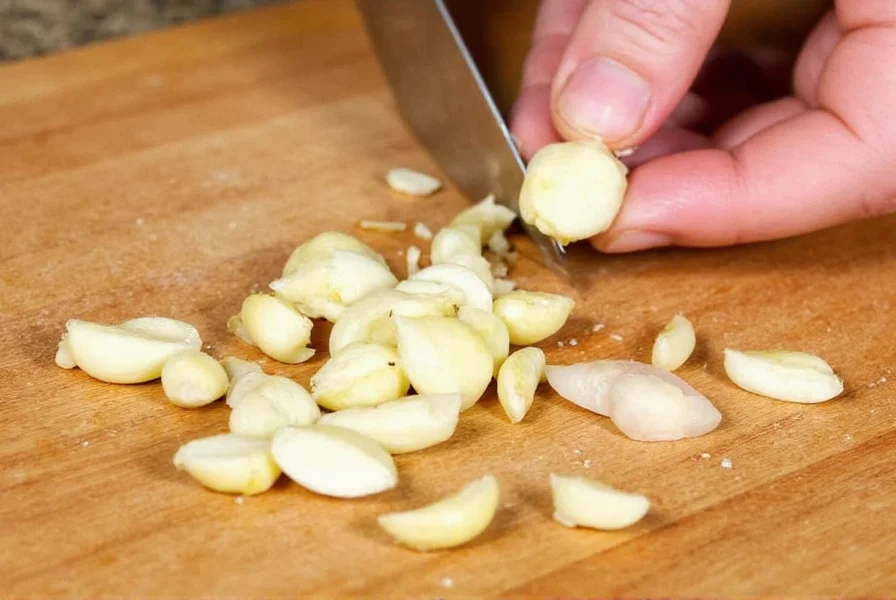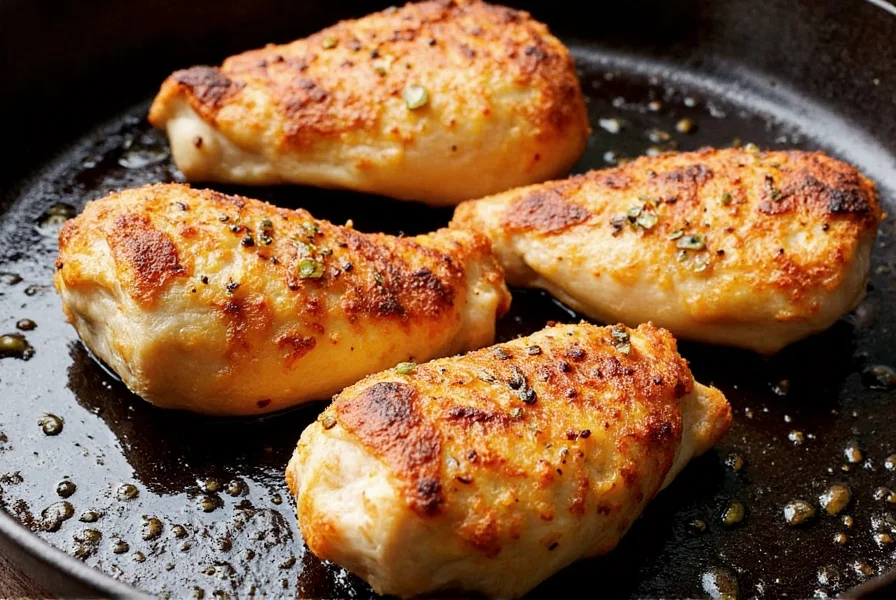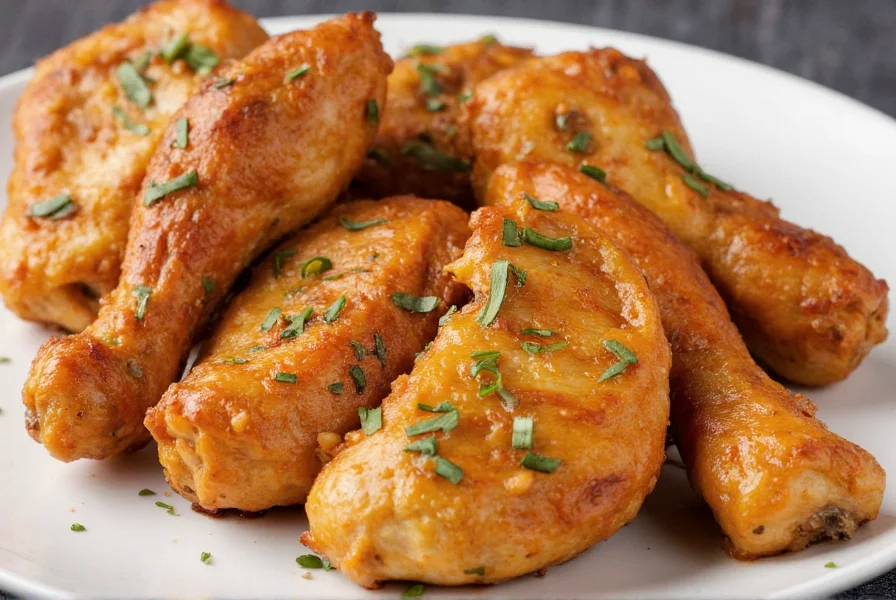Garlic pepper chicken stands as one of the most universally loved chicken preparations worldwide. This simple yet flavorful dish transforms basic chicken into a restaurant-quality meal with minimal ingredients and effort. The magic happens through the perfect balance of pungent garlic, aromatic black pepper, and quality chicken that creates a savory crust while keeping the interior moist and tender.
The Essential Components of Perfect Garlic Pepper Chicken
Creating exceptional garlic pepper chicken requires understanding each element's role in the final dish. Unlike many recipes that rely on complex ingredient lists, this preparation shines through the quality and proper handling of just a few key components.
Chicken Selection Matters Most
For the best garlic pepper chicken recipe, start with quality protein. Boneless, skinless chicken thighs offer superior flavor and moisture retention compared to breasts, though both work well. Thighs contain more fat which helps carry the garlic and pepper flavors while preventing dryness during cooking. If using breasts, consider pounding them to uniform thickness for even cooking.
| Chicken Cut | Cooking Time | Flavor Absorption | Moisture Retention |
|---|---|---|---|
| Boneless Thighs | 12-15 minutes | Excellent | High |
| Boneless Breasts | 10-12 minutes | Good | Moderate |
| Drumsticks | 20-25 minutes | Very Good | High |
Garlic: Fresh vs. Powdered
When preparing homemade garlic pepper chicken, fresh garlic dramatically outperforms powdered alternatives. The enzymatic reaction when fresh garlic is crushed creates complex flavor compounds that powder cannot replicate. For optimal results, use 4-6 cloves of fresh garlic per pound of chicken, minced finely but not pureed. The finer the mince, the more surface area for flavor development during cooking.

The Critical Role of Black Pepper
Don't underestimate the importance of proper pepper selection for your garlic pepper chicken marinade. Pre-ground pepper loses volatile oils quickly, resulting in flat flavor. Instead, use freshly cracked black peppercorns - the difference is remarkable. Aim for 1.5-2 teaspoons of coarsely cracked pepper per pound of chicken. The coarse texture creates delightful flavor bursts in the finished dish.
Step-by-Step Preparation Guide
Follow these professional techniques to achieve restaurant-quality results with your easy garlic pepper chicken recipe.
Marinating Process
While some recipes skip marinating, taking 30-60 minutes to let the chicken absorb flavors makes a significant difference. Combine in a bowl:
- 1.5 lbs chicken pieces
- 4-6 cloves fresh garlic, minced
- 1.5-2 tsp freshly cracked black pepper
- 2 tbsp soy sauce or tamari
- 1 tbsp olive oil
- 1 tsp sesame oil (optional but recommended)
- 1/4 tsp red pepper flakes (optional for heat)
Cover and refrigerate for 30-60 minutes. Avoid marinating longer than 2 hours as the acid can begin to break down the chicken texture.
Cooking Technique
The cooking method significantly impacts your how to make garlic pepper chicken results:
- Remove chicken from marinade, shaking off excess (reserve marinade)
- Pat chicken completely dry with paper towels
- Heat 1 tbsp oil in heavy skillet over medium-high heat
- Place chicken in single layer without crowding
- Cook undisturbed for 5-7 minutes until golden crust forms
- Flip and cook additional 5-8 minutes until internal temperature reaches 165°F
- Pour reserved marinade into pan during last 2 minutes of cooking
- Reduce sauce until slightly thickened

Pro Tips for Restaurant-Quality Results
Elevate your garlic pepper chicken dinner with these professional kitchen insights:
- Dry brine first: Sprinkle chicken with 1/2 tsp salt per pound and refrigerate uncovered for 1-4 hours before marinating. This improves moisture retention.
- Temperature control: Let chicken sit at room temperature for 20 minutes before cooking for more even results.
- Sear properly: Don't move chicken once it hits the pan - this allows proper crust development.
- Finish with butter: Add 1 tbsp cold butter during the last minute of cooking for enhanced richness and sheen.
Variations and Customizations
Adapt this versatile garlic pepper chicken recipe for meal prep to suit different preferences:
- Asian-inspired: Add 1 tbsp honey and 1 tsp ginger to the marinade
- Lemon-herb version: Include 2 tbsp lemon juice and 1 tbsp chopped rosemary
- Creamy garlic pepper: Finish with 1/4 cup heavy cream for a richer sauce
- Air fryer method: Cook at 380°F for 12-15 minutes, shaking basket halfway
Serving Suggestions
Pair your perfectly prepared garlic pepper chicken meal with complementary sides that enhance rather than compete with the main flavors:
- Steamed jasmine rice to absorb the flavorful sauce
- Roasted asparagus or green beans
- Simple cucumber salad with rice vinegar
- Crusty bread for sauce mopping
Storage and Reheating Guidelines
For optimal results with your garlic pepper chicken leftovers:
- Store in airtight container for up to 3-4 days
- Reheat gently in skillet with 1 tsp water to prevent drying
- Freeze for up to 3 months (thaw in refrigerator before reheating)
- Avoid microwave reheating which can make chicken rubbery











 浙公网安备
33010002000092号
浙公网安备
33010002000092号 浙B2-20120091-4
浙B2-20120091-4